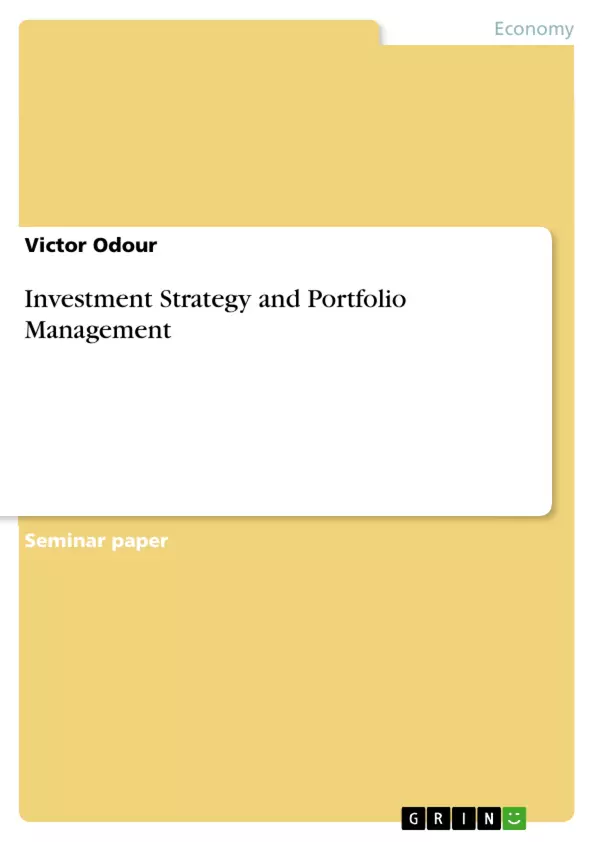Portfolio management majorly involves two types of investing: passive and active. In passive portfolio management the investment manager tracks an index passively by trying to replicate the performance of a benchmark index. This benchmark index is chosen by the portfolio manager based on certain criteria. In active portfolio management the investment manager tries to beat the benchmark index by outperforming the index. This is achieved by superior stock selection and superior weight allocation (Grinold & Kahn, 2000).
Norris Capital’s aim is to achieve significant growth in the value of its investments. Currently the company is also facing a lot of competition from depository institutions, mutual funds and other investment options. The company needs to achieve higher growth and superior returns in comparison to its counterparts. Hence the company should actively manage majority of its portfolio in order to achieve superior returns. Further the company should diversify the asset base and invest in assets of developing nations in order to improve returns. UK is a developed nation and the scope of growth in developed economies is much less as compared to the developing economies (Obstfeld, 2009).
Company expected outflows in cash after adjusting for the inflows is expected to be 3% of the total assets. In order to keep up with this outflow, the company should have a minimum of 3% of the total assets in liquid assets like cash and short- term investments. Currently company has 10% of its total investments in cash and short term investments so it is in a safe situation with cash flows. Money market instruments, commercial deposits, bank safe deposits are some of the liquid assets which can be liquidated immediately to get cash in order to meet any urgent requirements. Company needs to maintain sufficient amount of liquidity in its portfolio in order to manage the outflows which are expected to occur. If the company doesn’t invest in such instruments it may have to go for distressed sale of other assets and can incur losses.
Table of Contents
- Introduction
- Current Situation
- Plausible Asset Allocations
- Risks Associated
- Alternative Investments
- Conclusion
Objectives and Key Themes
The text focuses on the investment strategy and portfolio management practices of Norris Capital, a company facing challenges related to growth and competition. The main objective is to explore how Norris Capital can achieve superior returns through active portfolio management and asset diversification strategies.
- Active Portfolio Management
- Asset Diversification
- Investing in Developing Economies
- Risks Associated with Asset Classes
- Impact of Economic and Political Factors on Investments
Chapter Summaries
The introduction provides a general overview of portfolio management strategies, highlighting the distinction between passive and active approaches. It emphasizes the importance of active management for Norris Capital to achieve its growth objectives.
The "Current Situation" section analyzes the challenges faced by Norris Capital due to its overexposure to the UK economy. It discusses the economic downturn in the UK and the uncertainties associated with Basel III implementation.
The "Plausible Asset Allocations" chapter explores two diversification strategies that Norris Capital should consider. These include diversification across economies, focusing on investing in developing nations, and diversification across asset classes.
Keywords
The text focuses on the core concepts of portfolio management, particularly active portfolio management and asset diversification. It highlights the significance of developing economies, such as China and India, in achieving superior returns and the importance of mitigating economic and political risks associated with different asset classes.
- Arbeit zitieren
- Victor Odour (Autor:in), 2010, Investment Strategy and Portfolio Management, München, GRIN Verlag, https://www.grin.com/document/267036



